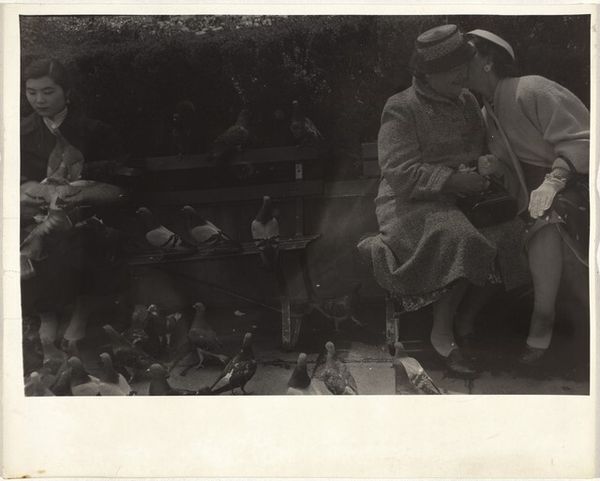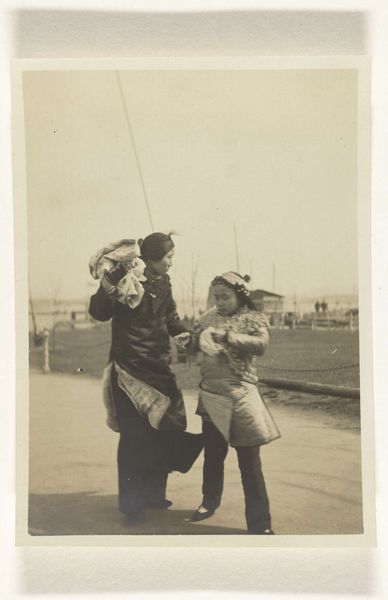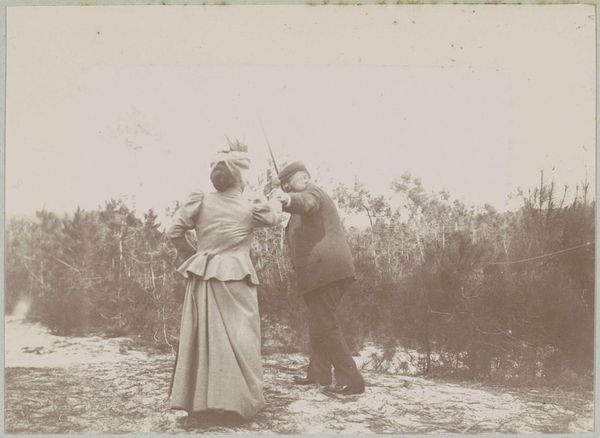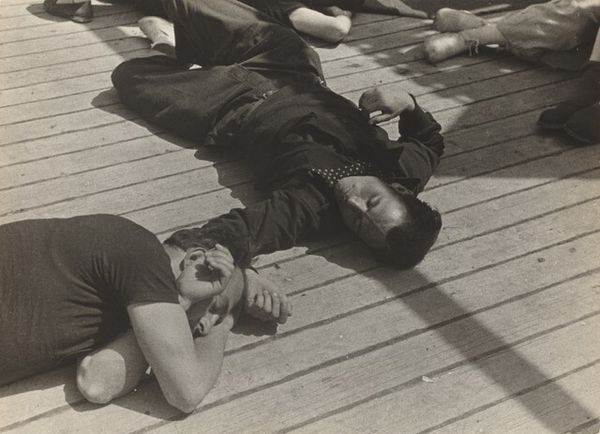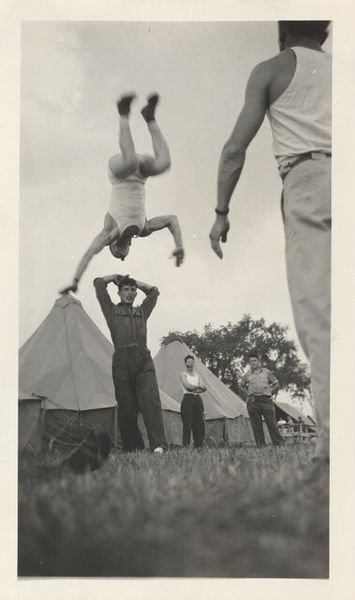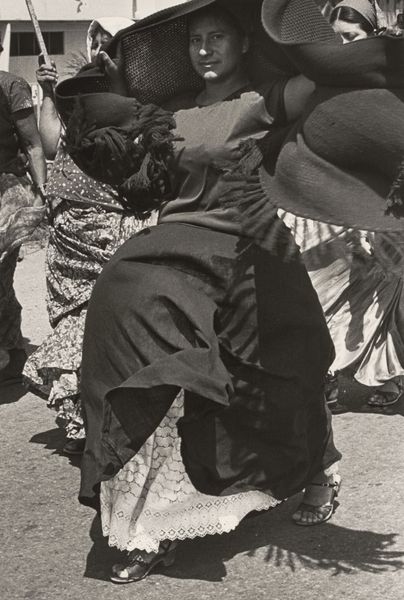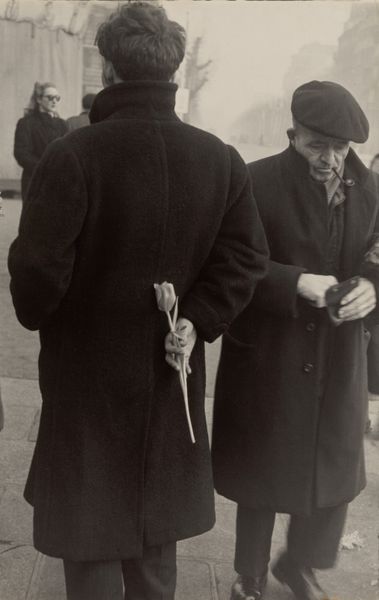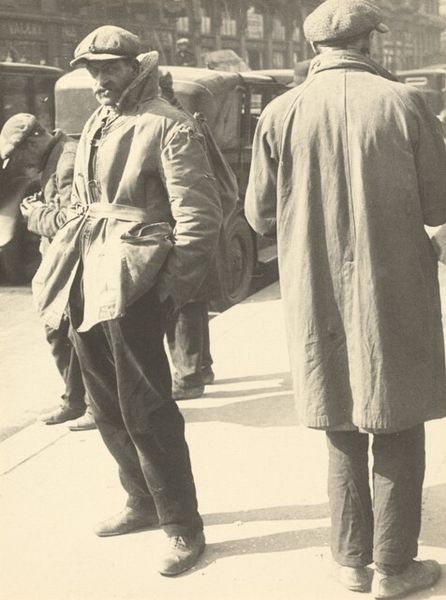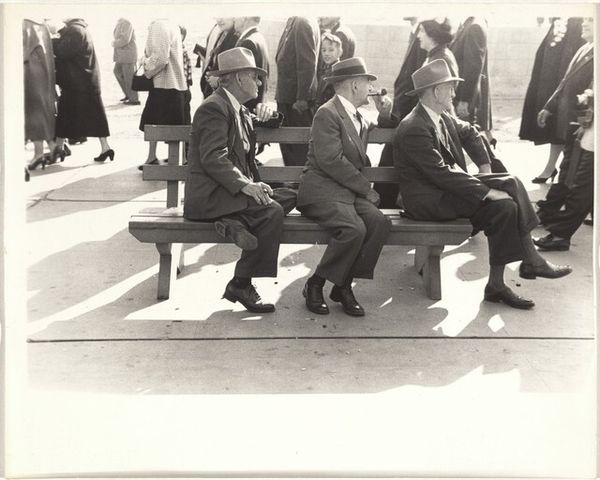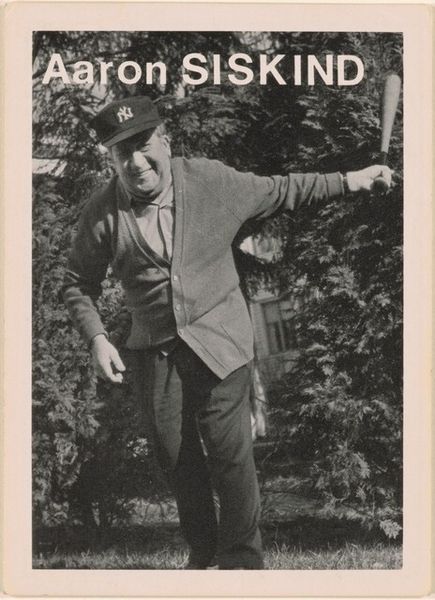
Dimensions: overall: 11.4 x 8.3 cm (4 1/2 x 3 1/4 in.)
Copyright: National Gallery of Art: CC0 1.0
Curator: This is T. Lux Feininger's "Dancing Couple," taken in 1932. It's a gelatin-silver print, catching a seemingly impromptu moment. What are your initial thoughts? Editor: There's a rawness here. The grayscale and casual attire almost lend it the candid feel of early street photography. Curator: Absolutely. Feininger was very involved in capturing the energy of urban life and experimental performance. Think about the silver gelatin printing process. Its particular tonal range, its ability to render details so sharply…it all contributes to this sense of immediacy, a very specific period look that connects to broader visual culture and the rise of mass media at the time. Editor: Right, and photography’s democratization as a medium shifted who was able to document life. Feininger capturing a dancing couple like this… what kind of social gathering was being memorialized in that specific moment? Curator: We know Feininger attended the Bauhaus and later became known as one of the ‘toyists’. Looking at that trajectory through craft, and art and everyday life all blending in art during the Weimar Republic, it speaks to a playful commentary about who creates art and where. The banjo player, the dancing pair; these weren't typical subjects for high art, but these ordinary situations reflected that culture's engagement with new forms of entertainment and togetherness amid so much political strife. Editor: You see that captured "everydayness" challenging conventions. In art historical narratives, this image reflects an emerging avant-garde interest in recording daily existence—not necessarily posed or idealized. But also, the image performs a subtle act of preservation, a look back on what might have been ephemeral celebrations or personal gatherings. Curator: Exactly, this casual scene might feel rather staged were it not for this specific approach, for Feininger’s choice to use the developing technology in new ways to record social practice, elevating seemingly pedestrian material culture into artistic relevance. Editor: What is also interesting is how even images like these can function as primary documents reflecting 1930s-era attire or musical culture, how photographic records like this both informed, and are informed by public imagination. It certainly enriches how we visualize those days. Curator: Well, looking closely, "Dancing Couple" demonstrates a fusion of photographic media, the conditions of its production, and these themes of public joy. Editor: I see it too, Feininger uses the visual vocabulary of modernism to explore a new way of visualizing everyday life in interwar Germany.
Comments
No comments
Be the first to comment and join the conversation on the ultimate creative platform.
